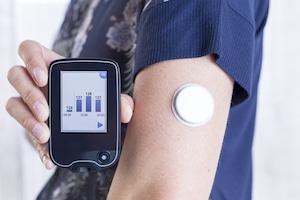Mar 14 2017
One of the critiques of the Affordable Care Act (ACA), aka Obamacare, has been that it lacked measures to bring down the cost of healthcare. This is not entirely accurate. By penalizing medical institutions for readmissions of patients because of an existing condition that had been previously treated, monitoring patients once they leave the hospital, be it for adherence to medication regimens or simply to watch for post-treatment complications, became a top priority. In addition to reducing costs, that raised the profile of remote monitoring devices, a technology that continues to make great strides. One of the looming advances in that field will be what Bill Betten calls “sensor fusion.”
 Credit: PlasticsToday
Credit: PlasticsToday
Betten is Director of Business Solutions at Devicix (Eden Prairie, MN), an engineering and product development firm serving medical device OEMs. He has been involved with research into transmission of medical data from remote locations since the mid-1990s, when he participated in an experimental project that beamed radiological images from the USS George Washington to the Walter Reed National Military Medical Center. The ultimate goal, he explains, was to determine if someone needed to be evacuated. Remote transmission of medical data has evolved dramatically since then, driven by wireless capabilities pioneered by consumer technology and a profusion of cheap sensors. “The availability of cheap communication tools and cheaper technology has changed everything,” says Betten. The next step is contextualizing all of this data to make it meaningful for the patient and healthcare provider. That’s where “sensor fusion” comes in.
There are all sorts of devices on the market today that monitor vital signs, but it’s the “ability to take all that information and put it together in the proper context” that will be the next evolutionary step in the remote monitoring space, says Betten.
“Having devices that communicate clinically relevant information and aggregate that data so that it can be put on a time scale and correlated is coming,” explains Betten. “For example, if I have an elevated heart rate but I’m also monitoring my oxygen saturation with a pulse oximeter, my temperature and various other things, correlating that data will tell the practitioner if my heart is racing because I’m having an incident or doing something strenuous. Putting the data into context and aggregating it is an important development that is going to happen. That’s near term,” says Betten.
A variety of new sensing technologies also are on the horizon that may have a profound impact on people with chronic conditions. “Non-invasive glucose sensors are the Holy Grail,” says Betten. Cuff-less blood pressure monitoring is another technology that is getting attention. “Monitoring chronic illnesses today is like driving, and only looking at the road every six months or so. The real key is getting the right information at the appropriate time to permit either preventive or corrective actions to be taken. In some instances, that may be on a far more real-time basis than today,” says Betten.
Betten will discuss new and emerging technologies in remote patient monitoring during a conference session at Advanced Design & Manufacturing (ADM) Cleveland at 10:45 AM on March 29. Sessions are free to event attendees.
ADM Cleveland, which runs on March 29 and 30, showcases five zones devoted to packaging, automation and robotics, design and manufacturing, plastics and medical manufacturing. Hundreds of suppliers and numerous conference sessions offer sourcing and educational opportunities targeted to the medical, automotive and other key industry sectors. Go to the ADM Cleveland website for additional information and to register to attend.